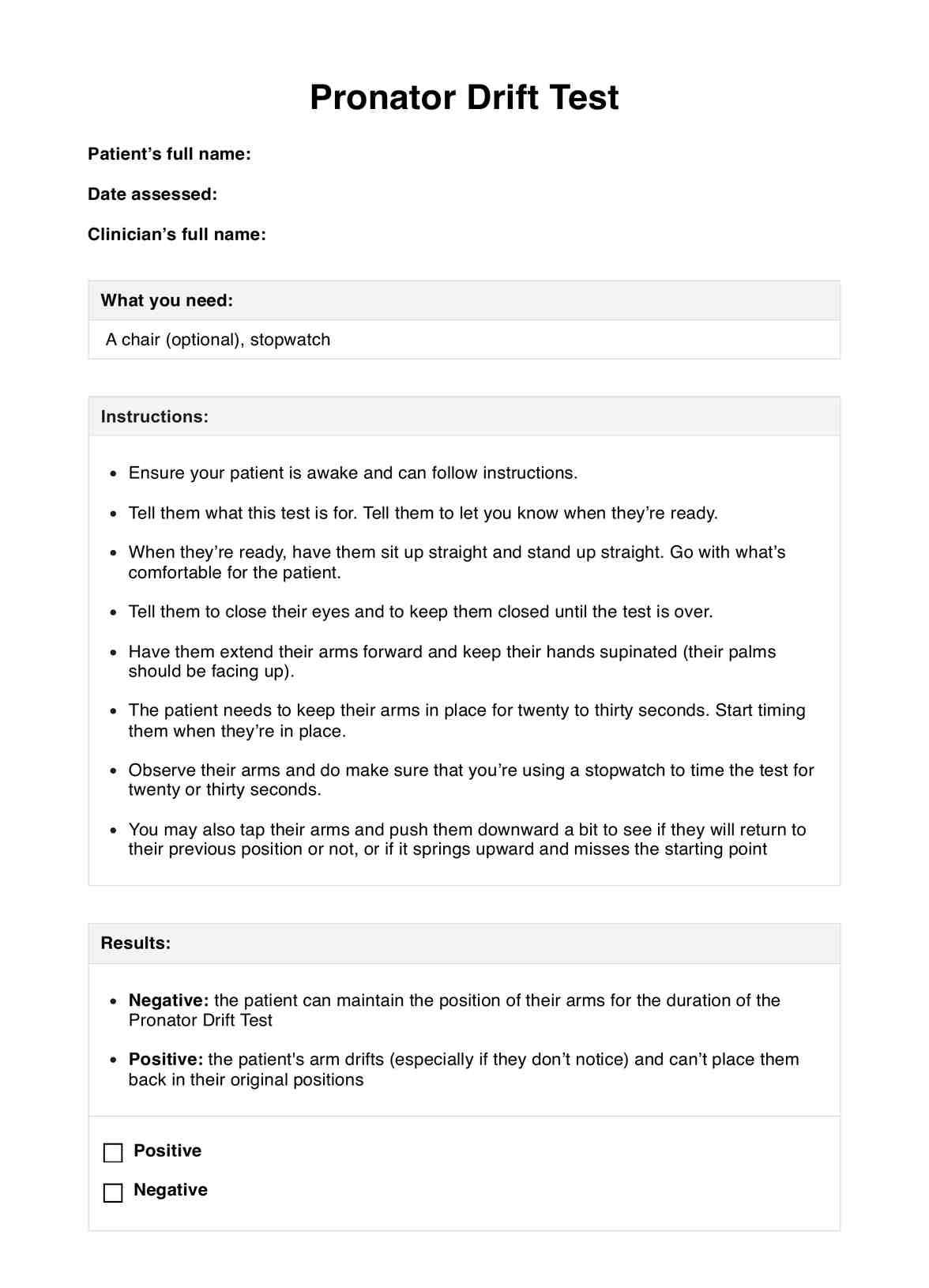The actual test only takes 20 to 30 seconds to complete. This doesn’t count the preparation and recording of the results.

Pronator Drift Test
Learn about Pronator Drift and what the Pronator Drift Test is by reading this mini-guide.
Pronator Drift Test Template
Commonly asked questions
No, but it can cause discomfort. Your patient will be maintaining a position where their arms are extended for 20 to 30 seconds. Most people can handle that, but some people can’t and may feel tired during the test.
It helps with diagnoses, but it doesn’t exactly diagnose anything because it only confirms the possibility of certain conditions and the potential lesions that a patient has based on the severity of the drift. Other tests, especially imaging tests, will confirm the actual problems.
EHR and practice management software
Get started for free
*No credit card required
Free
$0/usd
Unlimited clients
Telehealth
1GB of storage
Client portal text
Automated billing and online payments











